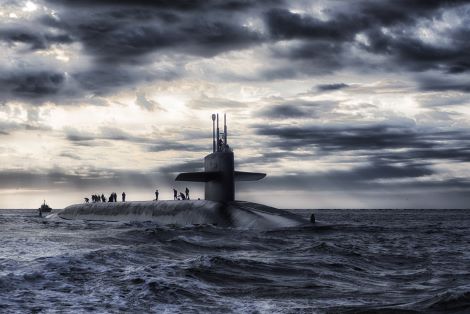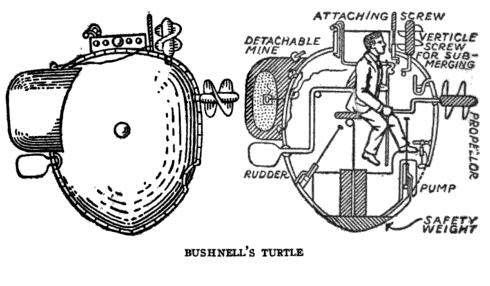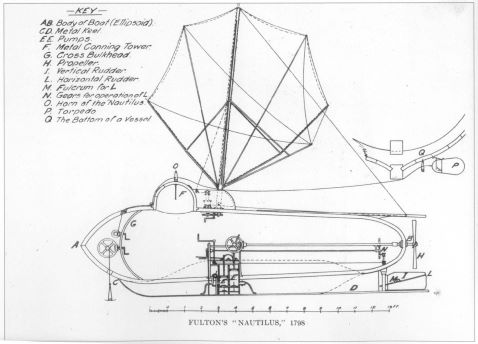


Deeplight
The Mad Inventor’s Guide to Aquatic Adventure
Most of us imagine a submarine looking something like this.

It’s a bit alarming to think of sinking beneath the waves in a long metal tube, but at least this is a big, sturdy tube made of thick metal. It’s got a decent engine, sonar, lots of sensors, electric lighting and supplies of compressed air.
So did I base the submarines in Deeplight on this modern, sensible sort of submarine? Of course not! Where’s the fun in that? No, I started researching really early submarines, which were much stranger, crazier and more dangerous.
The splendidly-named Cornelius Van Drebbel created one of the very first working submarines four hundred years ago.

It was made of timber and oiled leather, and was powered with oars! With King James looking on, Drebbel successfully rowed it up and down the Thames, underwater. (It’s probably just as well he never took it out to sea, though.)
The submarine shown below was the first to be used in a war – the American War of Independence. It was nicknamed ‘the Turtle’ and you can probably see why.

The brave soldier who set out in the Turtle had to crank the propeller by hand, which was really tiring. He was sent to blow up the British flagship, but he ran into problems with currents, and couldn’t complete his mission. He did manage to set off his bomb near the British fleet, though, which threw them into confusion. People get panicky when innocent-looking water starts exploding for no reason...
This 200-year-old sub called the Nautilus looks a bit more like a normal submarine, doesn’t it? Well… apart from the collapsible mast and sail.

And then there was John Day. His bright red submarine Maria was basically a modified fifty-ton boat, loaded down with ballast. In 1774, he declared that he would descend into the depths of Plymouth Sound, stay there for twelve hours, and then rise again triumphantly. Huge crowds turned up to watch him submerge, and laid hefty bets on whether he would succeed. With bated breath they waited for his submarine to rise again… and waited… and waited…
Poor John Day never returned from the deep. But perhaps it’s more surprising that so many other intrepid inventor-adventurers escaped the same fate…





